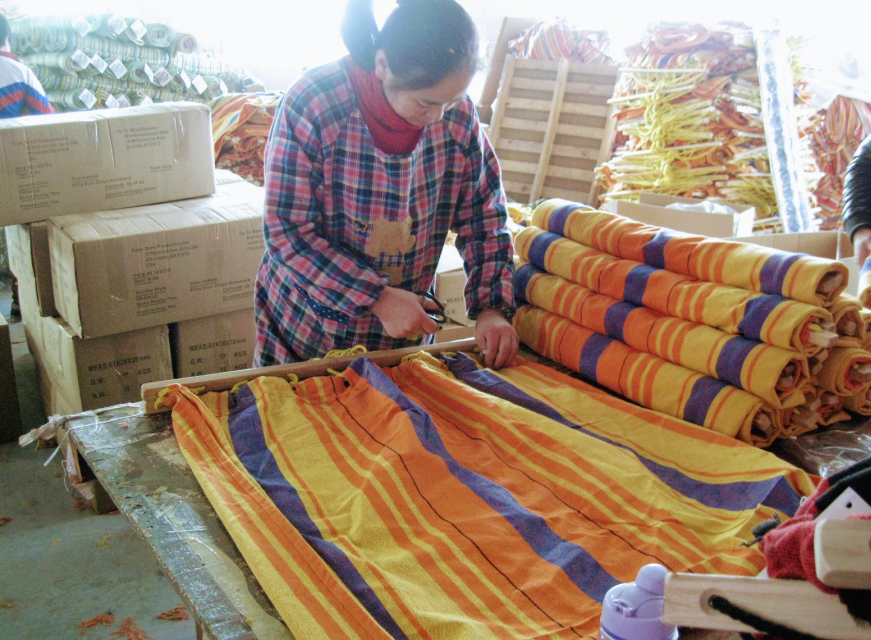Working with smaller factories in China comes with it’s own unique set of risks.
Processes are more piecemeal.
Service is based more so on the here and now.
Product understanding and quality are not so much the goal, as is “order in, order out.”
This is a continuation from the last post on the dynamics of a smaller facility.
Smaller Factories and the Various Risks
Less knowledge of the product in the outside world.
Frequently these shops manufacture for domestic business or developing nations.
If you’re a buyer from the USA, with USA quality expectations, the factory is oblivious to what you expect.
They may listen to what you request.
They’ll agree.
But they do not have firsthand knowledge of the product in it’s market.
The expectations of the product are lost on the factory…or you may say the “spirit” behind the product.
This bleeds over into the quality and the handling of production.
The factory may overlook market specifics that the buyer assumes the factory considers in manufacturing.
Usually there’s a trade company in between.
The risk buyers face from smaller factories may not come first-hand.
In other words, if you buy from trade companies, they handle these facilities.
Many problems your trade company supposedly handles on your behalf is because they contract smaller factories.
The trade companies volley between different vendors at any given time, thus the inconsistency in quality or timing.
No quality systems in place.
There’s generally no QC on incoming materials, especially when they are purchased from the brother-in-law.
The smaller factory “trusts” their source and doesn’t want to cause a familial rift. This is a hypothetical, but a very real situation.
Operators are often paid by the piece.
Churning out quality products is not something they care about (and they hate having to do rework).
When the buyer has them do the rework, this frequently leads to even more issues; damaged packing, dirty product.
- No first-piece inspection, no formal in-process inspection.
- No process for workers to escalate issues they see. Boss is busy, bosses wife won’t allow for company rifts.
- One or two skilled technicians keep the whole place up by doing constant fire-fighting, and all sorts of problems balloon as soon as they are off the job
Lack of consistency in workers.
Workers come and go.
An able sales contact that deals with overseas buyers won’t stick around long.
The sales contacts the factory does have (assuming they deal with foreign buyers) have little experience in international professionalism.
You’ll spend many late nights explaining specifications.
Doubts linger on if the factory really has a solid grasp on the project.
Because of fewer workers on production lines, this leads to the obvious quality issues; skipping processes, sloppy packing.
And there’s also overall delays in timing.
Inconsistent volume of business:
Sometimes the service is great and with the right control, you can achieve good smaller runs.
I remember cases where I was developing product and the factory was motivated to handle a project.
Until an old, larger customer returned for business.
Then our job was no longer important or was regulated to lower sales staff.
This would lead to either potentially delayed or rushed production.
Sometime if we were in the middle of developing the sample and if it wasn’t smooth, the factory would altogether want to drop the project.
Communication:
Regardless of instant communication, smaller factories aren’t proactive with communication.
Whether verbal or visual, there’s lack of substantial updates.
The smaller facilities won’t actively send images of your product.
Frequently you won’t know what phase production is on until they send the 70% invoice saying they’re ready to ship.
Lack of compliance:
If you want to manufacture anything require some form of compliance, forget about it.
They’re not up-to-speed socially or from a manufacturing standpoint.
The physical facilities are outdated. They would fail any social compliance certification.
The HR policies are sometimes horrible.
There is no protective equipment on processes such as polishing or cutting. Employees just grab tools and get started in a haphazard fashion.
If you import on behalf of a brand, you wouldn’t want to take your buyers to these places.
Hell, the folks that buy the product off the shelf wouldn’t want to see this place.
I saw this when I was working in the promotional product industry.
I always thought to myself, “I wonder if their brand knows they buy this way?”.
Stability:
These facilities are less stable.
China seems to close more and more of them as each year advances.
Factories move towards automation.
These smaller facilities are not able to keep us with the competition.
Here’s an article, not so much about smaller facilities but the pressure that the factory business is under to modernize or get left behind.
China Transforms and a Factory Owner Struggles to Follow
Debt:
Debt is a monster found in the warehouse of some of these smaller factories.
In a world of rising wages and if the factory owner was a poor money manager, he’s doing all he can to hang on.
Dealing with a factory in this predicament is dangerous on many levels.
Worst case scenario, means the factory closes and doesn’t deliver your product.
Of course with your money in hand.










China Sourcing Basics
Let me share what I've learned about China Sourcing.
Provide your email & receive free ebook: 40 Tips for Emailing China Suppliers.
I'll never spam. I'll share tips on Private Labeling, Sourcing and China Business.
You have Successfully Subscribed!